The Vigeland Sculpture Arrangement is a permanent, open exhibition of the works of the brilliant Norwegian sculptor Gustav Vigeland, located within an 80 acres area inside the Frogner Park in the borough of Frogner in Oslo, Norway. When the City of Oslo was forced to demolish the house of the celebrated artist, Vigeland was granted a new building from the city where he could work and live. In exchange, he promised to donate to the city all his subsequent works, including sculptures, drawings, engravings and models.
Vigeland moved to his new studio on Nobels gate in the borough of Frogner during 1924. Over the following twenty years, Vigeland was devoted to the project of an open exhibition of his works, which later turned into what is known as Vigeland Sculpture Arrangement in Frogner Park. Holding the record for being the largest sculpture park created by a single artist, Frogner Park's Vigeland Sculpture Arrangement features 212 bronze and granite sculptures all designed by Gustav Vigeland himself.
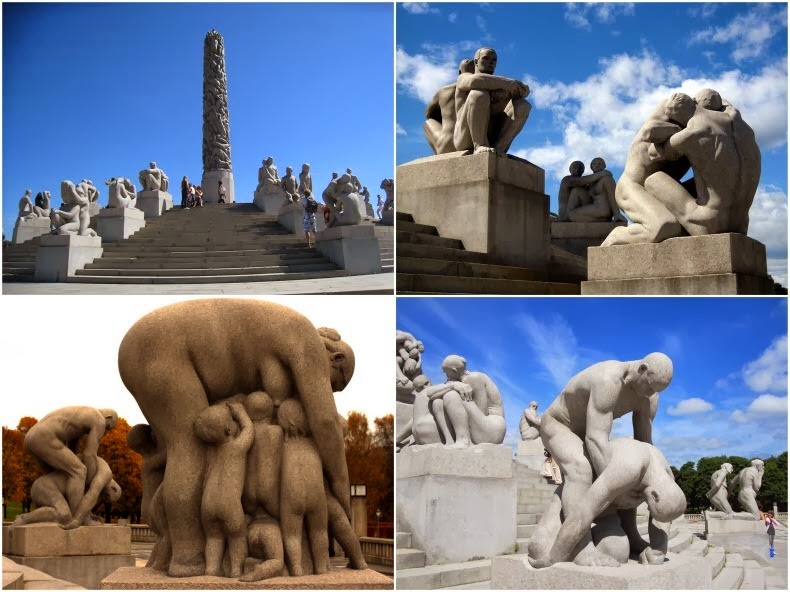
Vigeland sculpted hundreds of men, women, and children portrayed in various stages of life - adults, adolescents, toddlers and infants, and even fetuses. The dominant motifs of his sculptures is the relationships between man and woman, adults and children, and the various stages of the “human condition”. Most of the statues depict people engaging in various typically human pursuits, such as running, wrestling, dancing, hugging, holding hands and so on. However, Vigeland occasionally included some statues that are more abstract, including one statue, which shows an adult male, fighting off a horde of babies.
Vigeland modeled all his sculptures using clay in full size without any assistance of pupils or other artists. The carving in stone and the casting in bronze were left to a number of talented craftsmen. Vigeland also designed the architectural setting and the layout of the grounds including gates and bridges. Construction of the park lasted for a number of years. In fact, Vigeland did not live to see the completed park. The majority of the sculptures and the architectural elements was not installed until about 1950.
The park’s most popular attraction is ‘The Monolith’, a 14 meter tall structure of granite rising towards the sky, that features 121 figures struggling to reach the top. The sculpture symbolizes man’s desire to become closer with the spiritual and divine. It portrays a feeling of togetherness as the human figures embrace one another as they are carried toward salvation. Construction of the massive monument began in 1924 when Gustav Vigeland himself modeled it out of clay in his studio in Frogner. It took 3 stone carvers 14 years to transfer the figures from clay to the rock.
In the Vigeland Museum located within the park, one can see the original full-size plaster casts to the sculptures in bronze and granite, as well as Vigeland´s early works, those which are mostly influenced by Auguste Rodin, and his woodcuts.
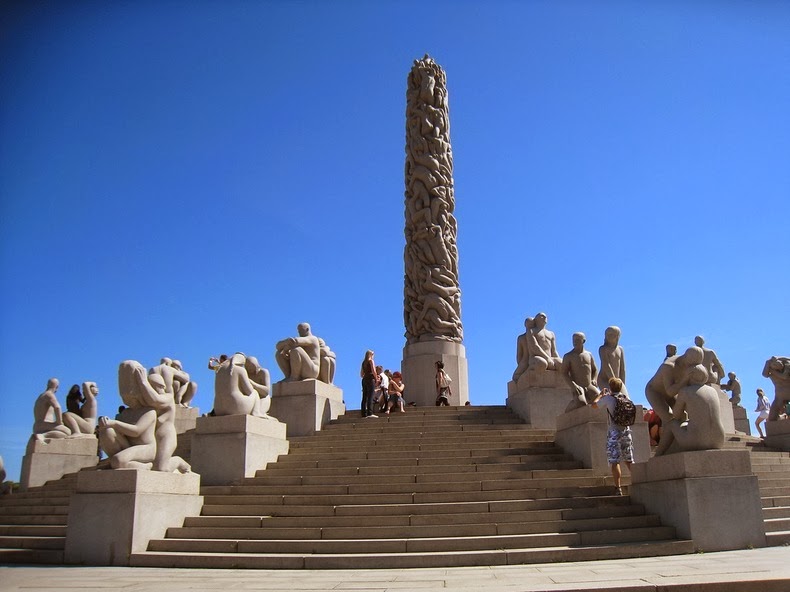
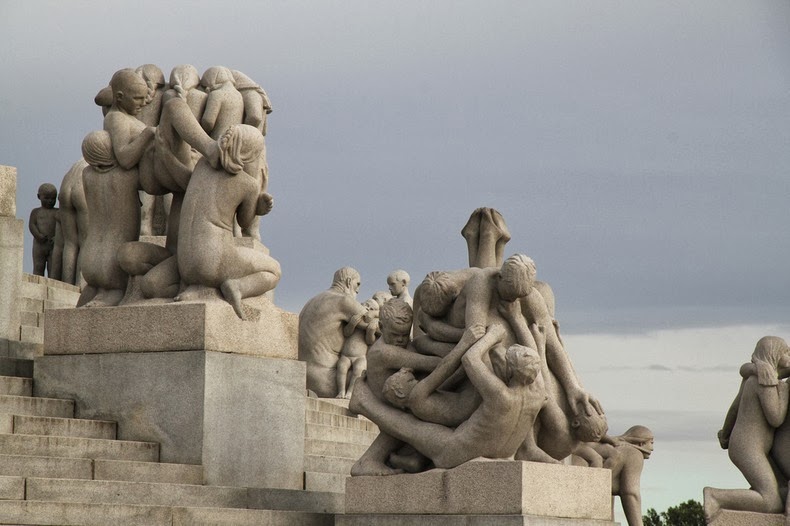
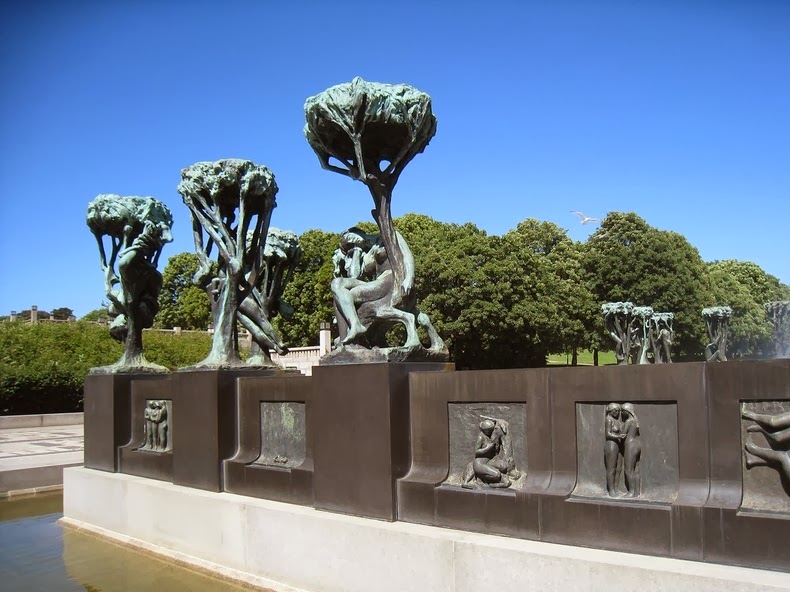
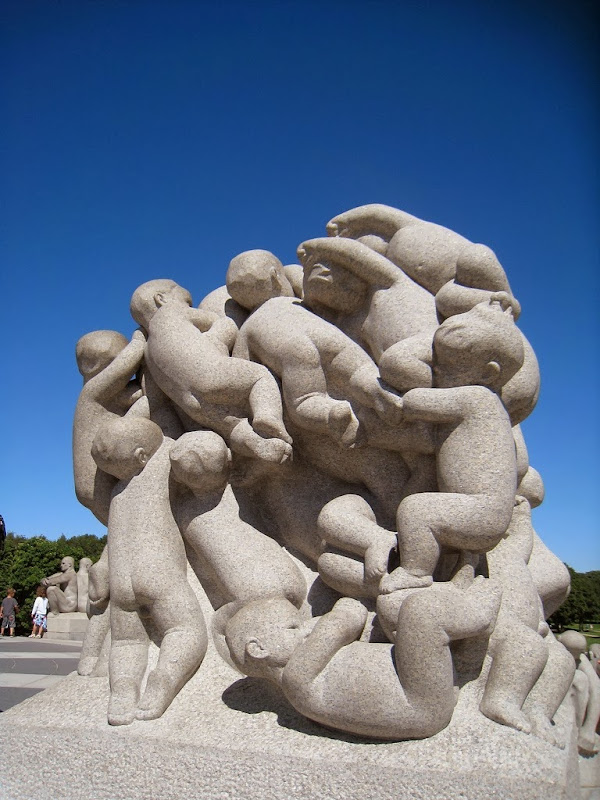

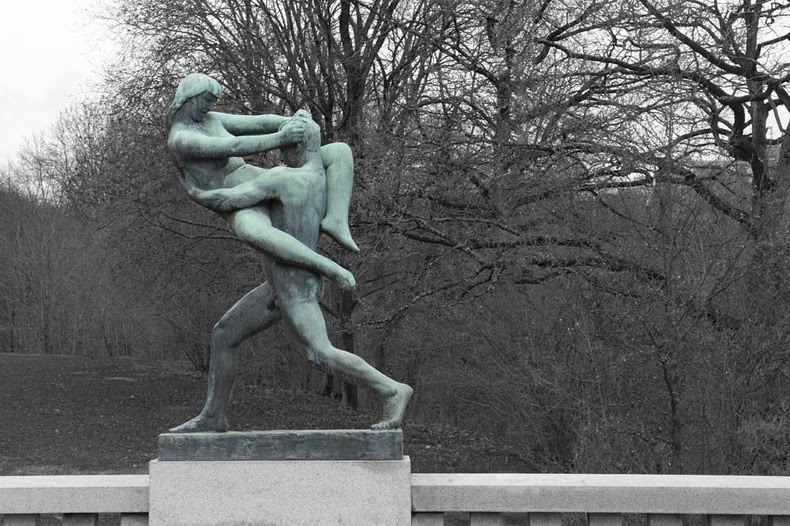
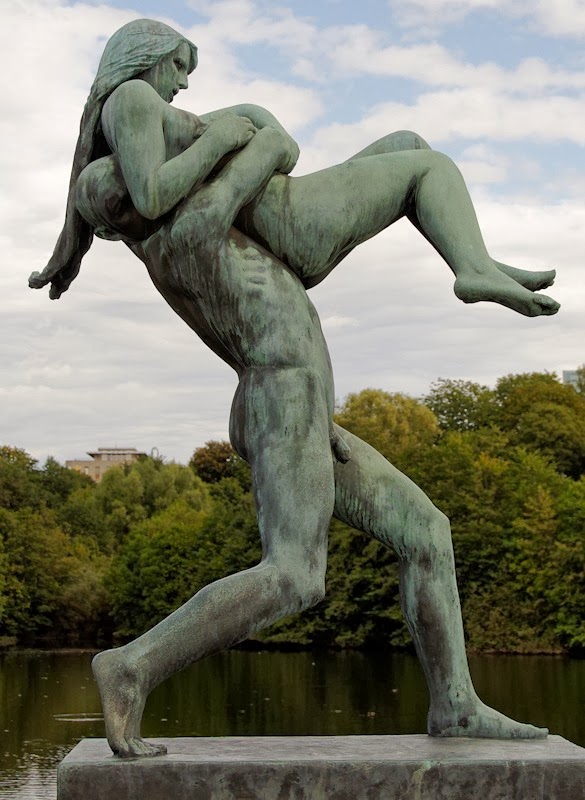
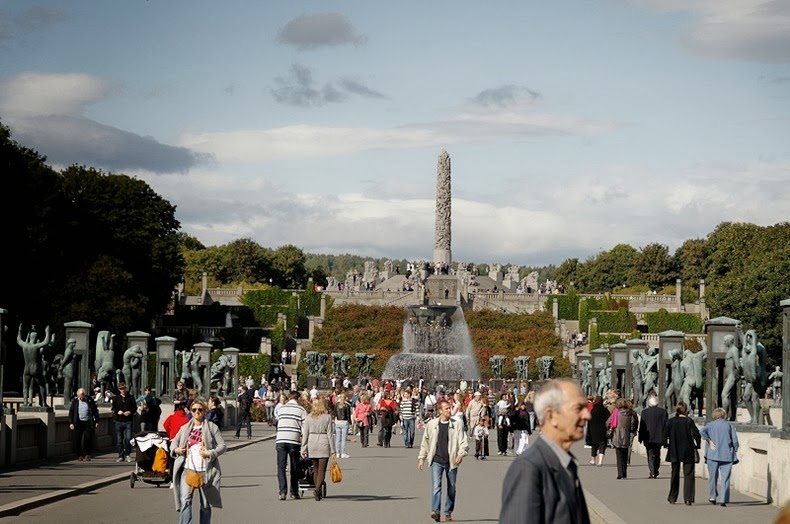
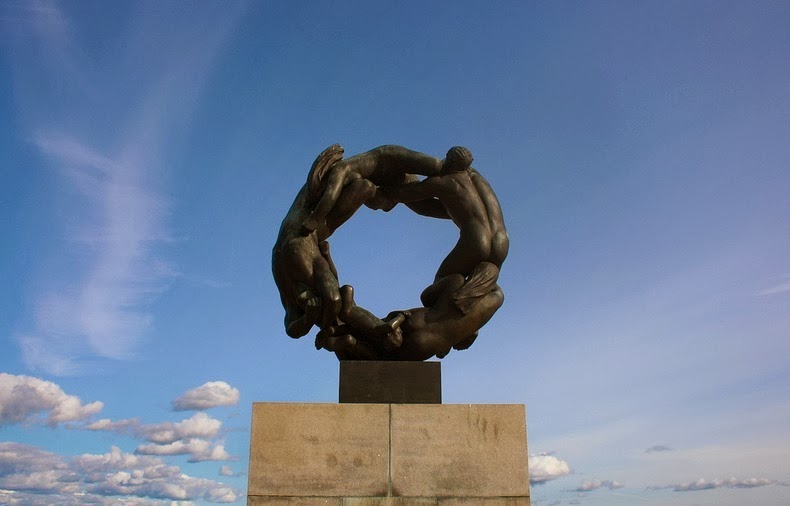
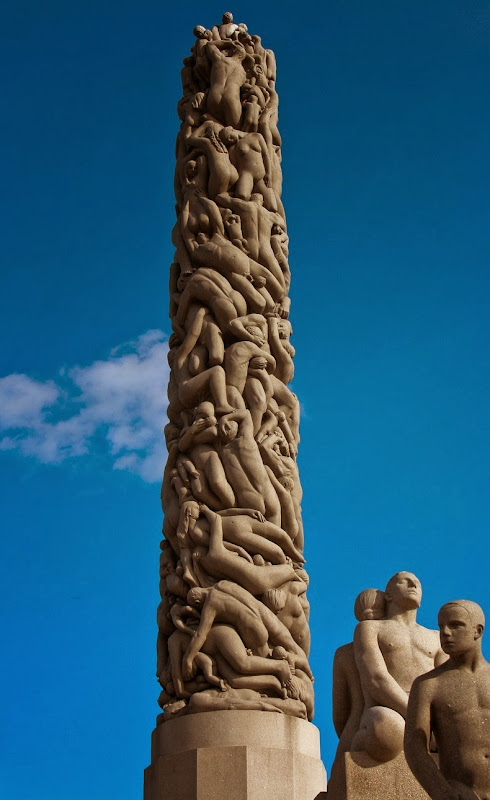
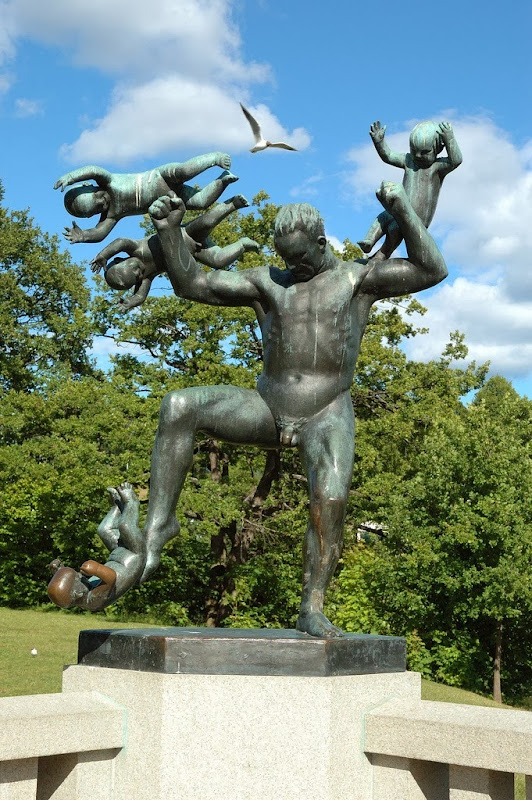

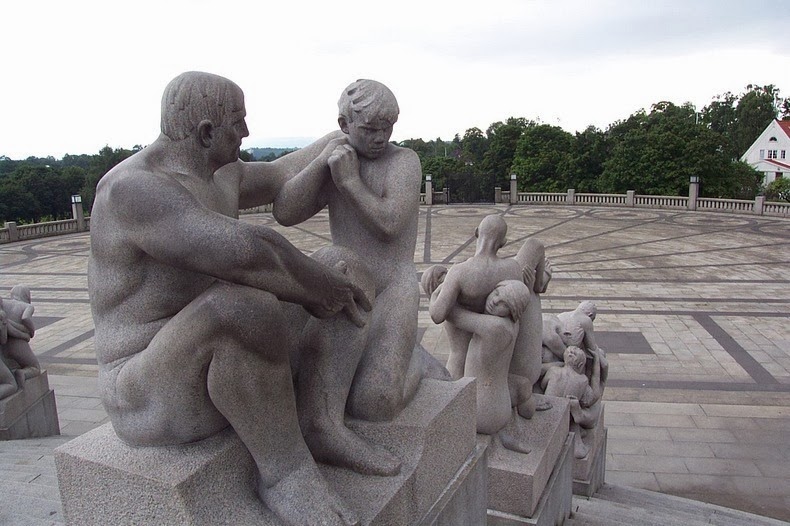
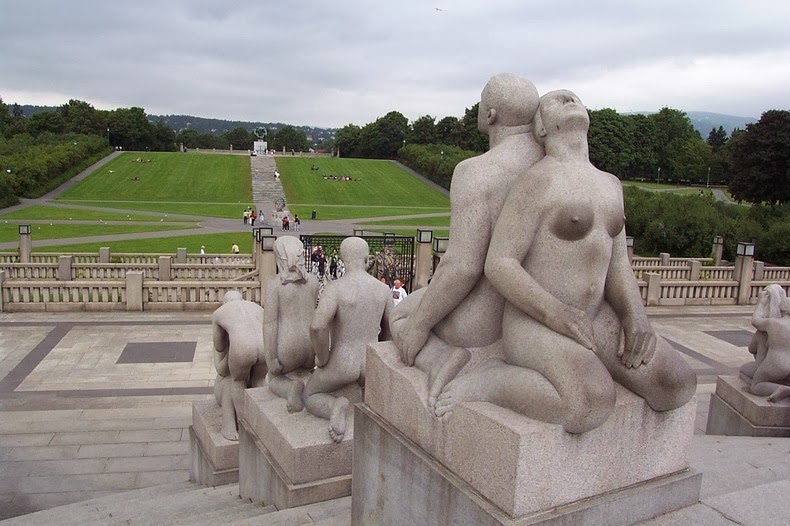
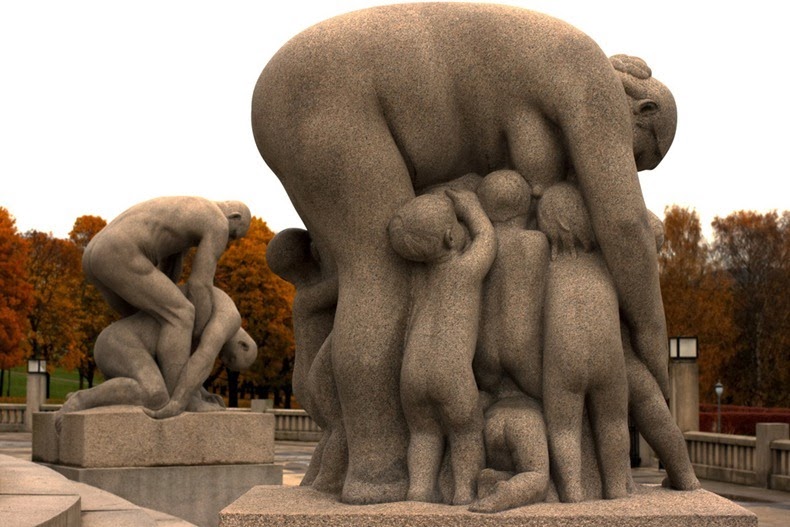
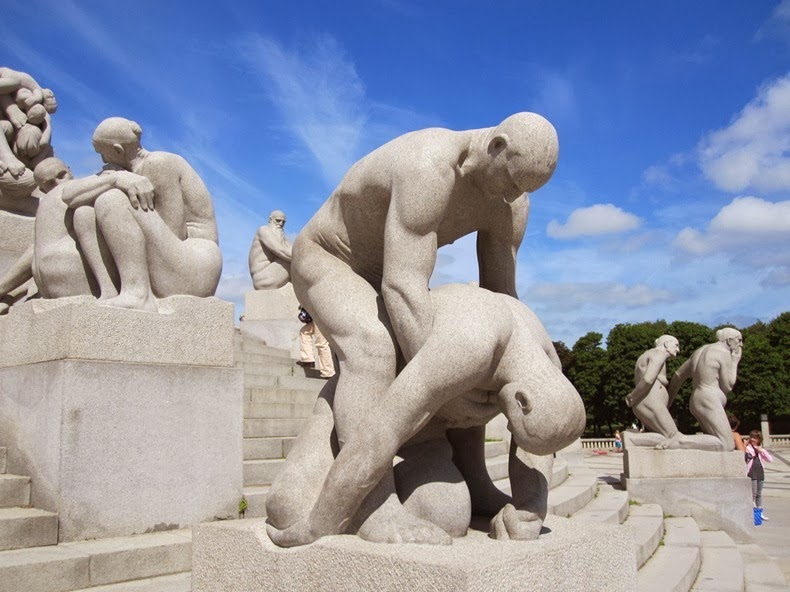
via AtlasObscura


